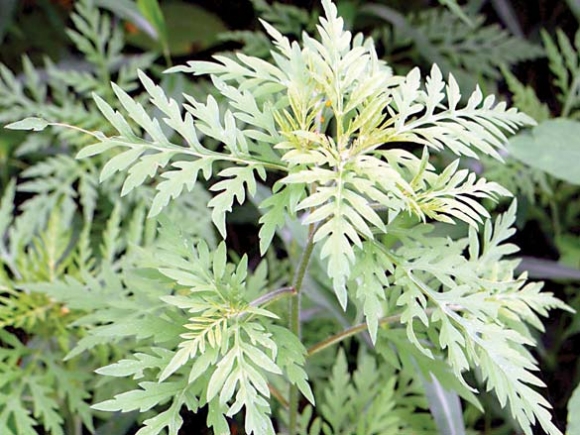It’s ragweed that is the real culprit

“Hay fever: An acute allergic condition of the mucous membranes of the upper respiratory tract and the eyes, characterized by a running nose and sneezing, conjunctivitis, and headaches, caused by abnormal sensitivity to certain airborne plants ....”
So, you find yourself coming down with the above symptoms? You’ve figured out that it’s hay fever you’re suffering from and have treated yourself accordingly with the help of a physician or non-prescription drugs.
So far so good. Your next step is to get rid of the goldenrods flowering along your drive or in a nearby field that are the cause of your misery. You’ll be wasting your time. The pollen produced by goldenrod plants is far too heavy to become airborne. It’s so heavy that insects — especially bumblebees — are required to transport it from plant to plant. Plants pollinated by windborne pollen — especially ragweed — are the real culprits.
Ragweed causes about half of the pollen-associated allergies each year. It blooms profusely along roadsides and in fields from late July into October, with each plant capable of producing up to a billion microscopic grains of pollen each year that are randomly dispersed (you read that right — a billion!). The pollen can travel for hundreds of miles in airstreams. Its seeds remain viable for up to five years, and they germinate readily whenever they find a patch of exposed soil.
We have three ragweed species in the southern mountains. The two that are frequently encountered are common or small ragweed (Ambrosia artemisifolia) which grows from one to six feet high, with leaves that are dissected into narrow segments; and great or large ragweed (Ambrosia trifida), which grows from three to 15 feet high and has opposite leaves that usually display three to five lobes. The greenish flowers and seedpods of both appear in dense racemes at the ends of the upright stems.
So, now that you know that it's ragweed and not goldenrod that’s causing your late-summer miseries, the thing to do is to eliminate the latter in your vicinity. But as with kudzu, that’s easier said than done. Ragweed, especially the common species, is persistent.
Related Items
The most effective antidotes are chemical spraying and constant mowing. If you choose to pull up the stalks and burn them when they dry, be aware that skin contact or inhaling the smoke can cause an allergic reaction.
Look on the bright side. Ragweed seeds, many of which cling to the plants through winter, provide food for birds during the most stressful portion of the year. Sparrows, purple finches, and other seed-eaters relish ragweed seeds and are thereby, unknowingly, perhaps our most effective hay fever fighters.
What’s in a name? According to Weeds and Words: The Etymology of the Scientific Names of Weeds and Crops (1989) by Robert L. Zimdahl, the genus designation “Ambrosia” may be a good example of the lack of utility of etymological understanding (since it) is Greek and implies immortality and food for the Gods.
(George Ellison is a naturalist and writer. He can be reached at This email address is being protected from spambots. You need JavaScript enabled to view it..)









